Growing Blog
The Yellow Oyster Mushroom
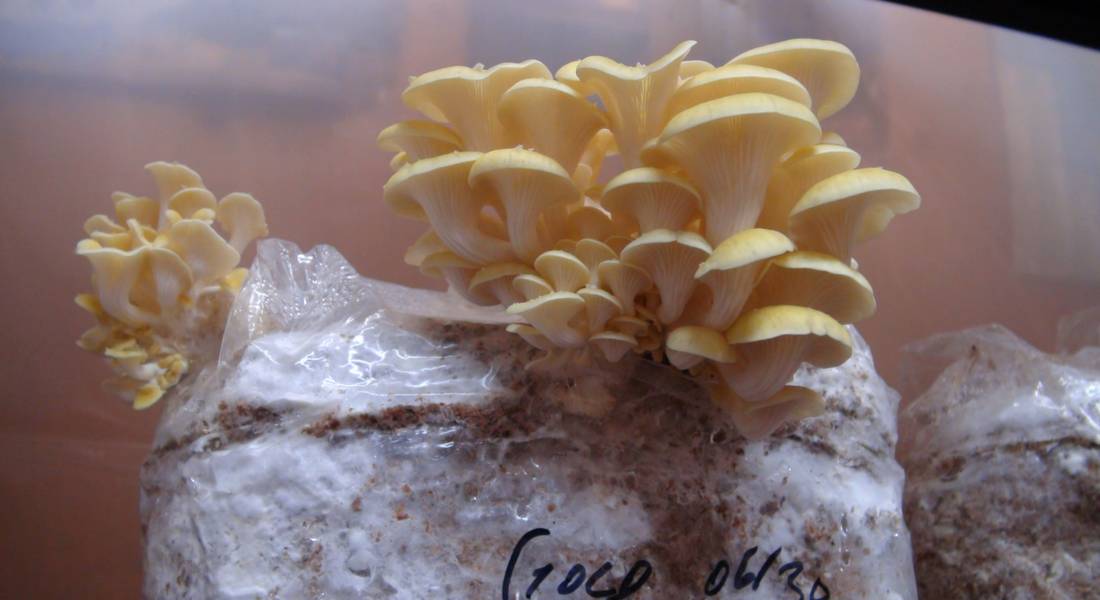
Contents
The Yellow Oyster Mushroom, sometimes called the Golden Oyster, is both stunningly beautiful and easy to grow, making it a popular choice among home cultivators. This mushroom grows fast and fruits heavily in vibrantly bright “bouquets”, although the small and relatively thin fruiting bodies usually make for a smaller overall yield.
For the most part, you are unlikely to see Yellow Oysters at your local grocery store- since delicate features and a short shelf life make it difficult to produce these mushrooms on a commercial scale.
Scientific Name: Pleurotus citrinopileatus
General Description
Yellow Oyster mushrooms grow in small, bright yellow “bouquets”. These beautiful mushrooms are guaranteed to be a head-turner, and are a favorite among farmer’s market growers for this very reason. Similar to Pink Oyster Mushrooms, yellows are a warm weather strain, able to withstand higher fruiting temperatures.
Usually forming multiple clusters, the yellow oyster will produce a high number of fruits which are notably smaller than other oyster mushrooms. Thin, delicate caps require gentle harvesting and careful storage. Generally, yellow oysters have a short shelf and don’t do well with excessive handling and transportation.
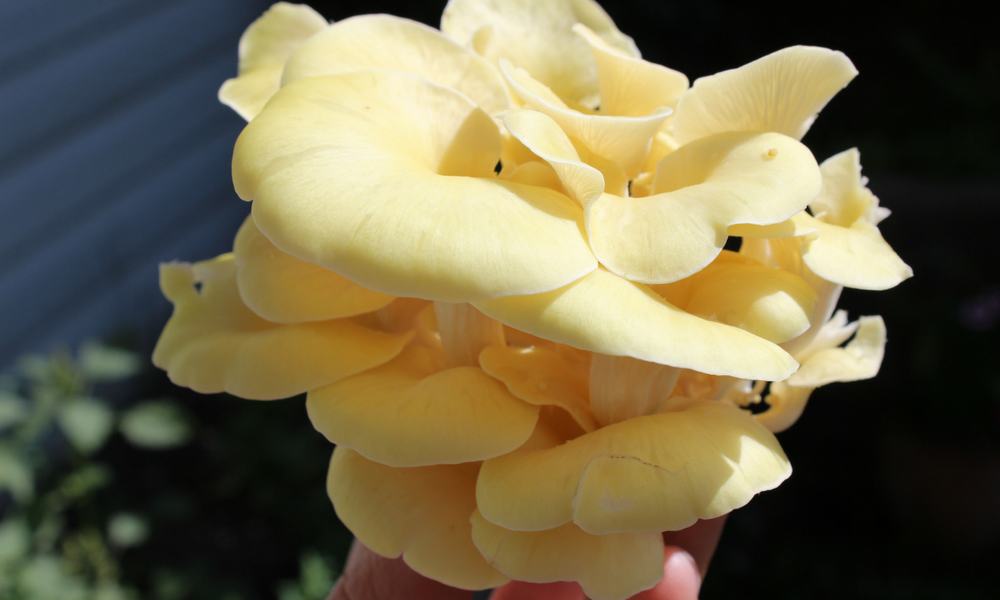
Natural Habitat: Yellow Oyster Mushrooms are naturally found on hardwood trees such as oak, elm and beech. The mushroom is native to subtropical regions of Asia.
Difficulty of Cultivation: Easy
Agar: Yellow Oyster mycelium grows well on Malt Yeast Agar. Eager to fruit, you will often see small pins forming on the dish. If left long enough, the mushroom will fruit though the sides of the agar dish. The mycelium can be extremely dense in places and quite thin in others.
Spawn Types: Grain spawn works best. Rye grain, sorghum, millet or a combination of them are all good candidates for yellow oyster spawn. Mycelium growth though the spawn will be slow at first, but accelerates in pace as the culture colonizes the spawn.
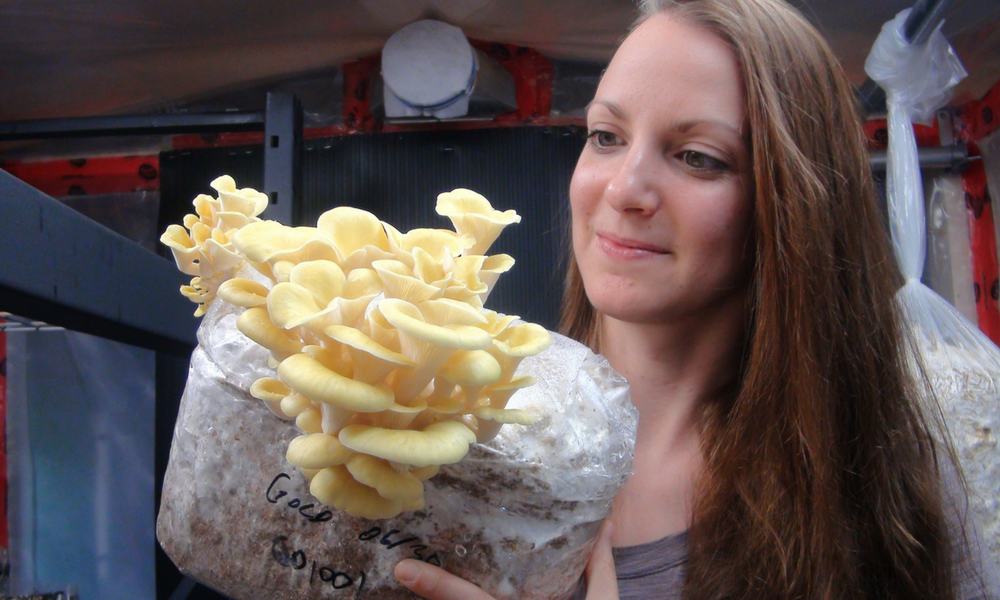
Substrate Types:Yellow Oysters can be grown on either straw or supplemented sawdust. Both work quite well. Supplemented sawdust blocks may provide less delicate (thicker) fruits, but overall yield will be similar.
Fruiting Containers:Use poly tubing if making straw logs or filter patch grow bags if growing on supplemented sawdust fruiting blocks. If using poly tubing, the mushroom will fruit through the holes in the tubing. For sawdust blocks, the cultivator may want to cut holes wherever first pins start to form. Cutting the top of the bag off entirely has non-optimal results. Bottle cultures are also commonly used to grow yellow oysters, with large single clusters forming though the top of the bottle.
Yield: Overall yields for yellow oyster mushrooms are smaller than other oyster species. This is due to the fruits being smaller and lighter, and because secondary flushes are usually minimal. A biological efficiency of 30-70% is typical for yellow oysters.
Harvest: Aim to harvest most of the mushrooms in the first flush. Rather than picking off individual mushrooms, the cultivator should remove entire clusters or individual “bouquets” at the base with a sharp knife. This will help to minimize handling. Store in a cool location such as a cold room or refrigerator. Yellow Oysters have a short shelf life and should be sold within a couple days of being harvested.
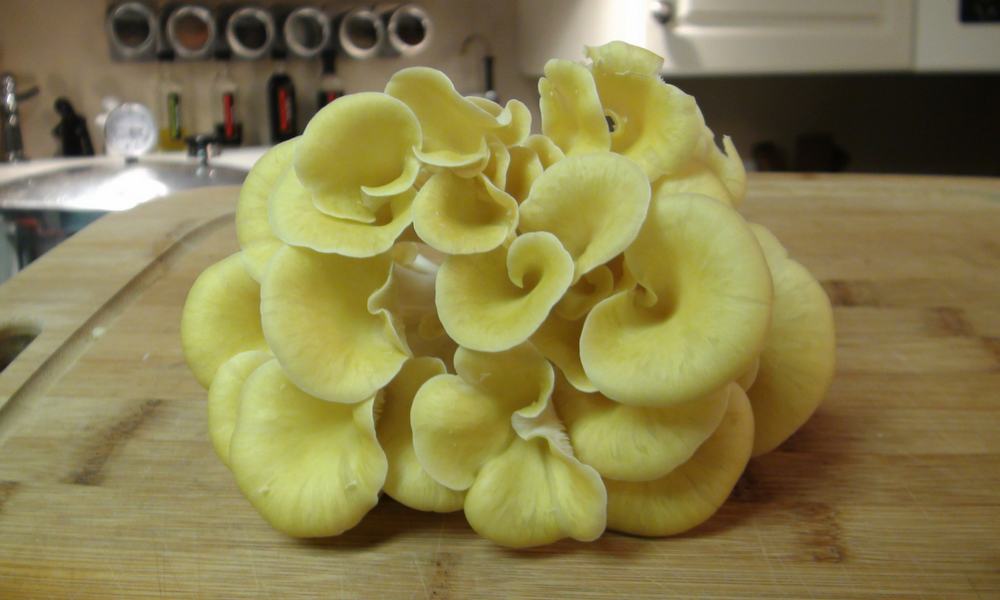
Weakness: Yellow Oysters are easy to grow but are extremely delicate, making them difficult to store and transport effectively. These characteristics, along with a short shelf life, make commercial cultivation challenging. Another potential weakness is long term storage of the culture. Since Yellow Oysters are a warm weather strain, storing a culture in the refrigerator may kill the mycelium.
Cooking: Yellow Oyster are a tasty addition to any meal. If undercooked, the mushroom can be extremely bitter and off putting. However, if cooked for a sufficient amount of time, a balanced “nutty” flavor develops. The mushroom can be cooked until it is crispy, with the tiny flaky caps acting as a substitution for bacon bits- a nice addition to salads. Unfortunately, the brilliant yellow color is almost entirely lost during cooking.
The Specifics
Spawn Run:
Incubate at higher than room temperature (~26 °C) for 10-14 days. Watch closely for pins forming inside the bag. You can shake once during colonization in order to speed up the process.
Initiate Pinning:
Pins of the yellow oyster will not form if the temperature is too low. Initiate pinning at 22-26 °C, with humidity at nearly 100% RH.
Fruit Development:
Maintain room temperature or greater throughout fruiting. RH between 80-95%. Fruitbodies should be fully formed from pins in around 5 days. Light is important in order to produce bright yellow caps
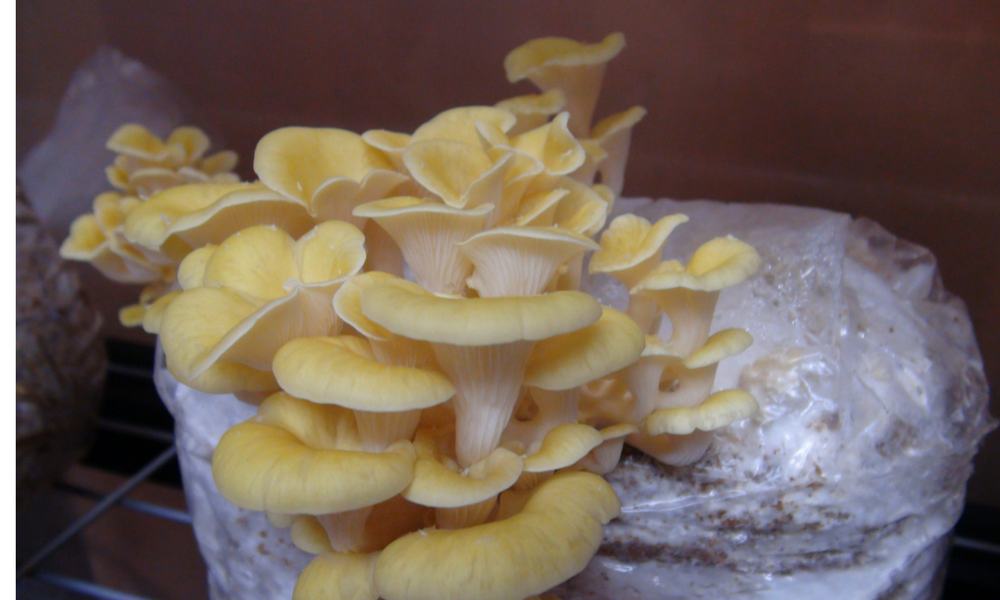
Yellow Oysters are some of my favorite mushrooms to grow! Easy to grow on either supplemented sawdust or straw, this mushroom is fast and relatively forgiving for new growers.
Forming beautiful yellow clusters, thus delicate mushroom deserves a spot in your grow room, especially over the summer months.

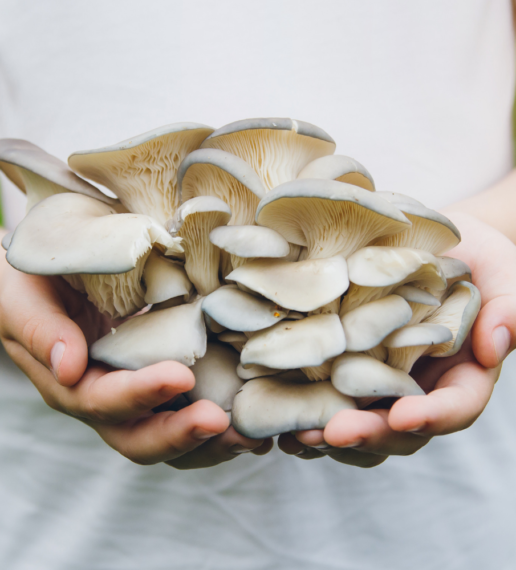
Hey you’ve got the scientific name spelled wrong here (“Plerotus cintrinopileatus”). It should be “Pleurotus citrinopileatus.”
You can delete this comment if you want.
Thanks for the heads up! I will leave this comment 🙂 (but definitely update the page) You are awesome thanks for letting me know…
You haven’t updated the page. You need to remove the first “n” to make it citrinopileatus.
Thanks for pointing that out again! Should be fixed now 🙂
What type mushrooms produce the most mycellium?
Hey Lynn! Not sure about which produce “the most” but all species have slightly different mycelial characteristics. Reishi is strong, oyster can be fluffy, lion’s mane is whispy ect.
Question:
When picking the Golden Oyster mushroom, at what point in the growth cycle should you just leave it be? When is. Too ripe to pick and eat.
Thank you!
Hey Julie! Best time to harvest is right before the spores start to drop, right before the cap curls up. Even after the spores drop, it is still good to eat- but will lose quality quickly.
Isnt it similar to all oyster mushrooms?
More or less they are all vaguely similar in harvesting, but require different growing techniques and environments for growing.
Yo, Tony! How you doing?
I’m a new grower, and I’m so intrigued by mushrooms. I have question specifically about Golden oyster.. you mentioned sawdust and straw. I have actually gotten hardwood and coco coir. How does this affect thr growth or spawning of the Goldies?